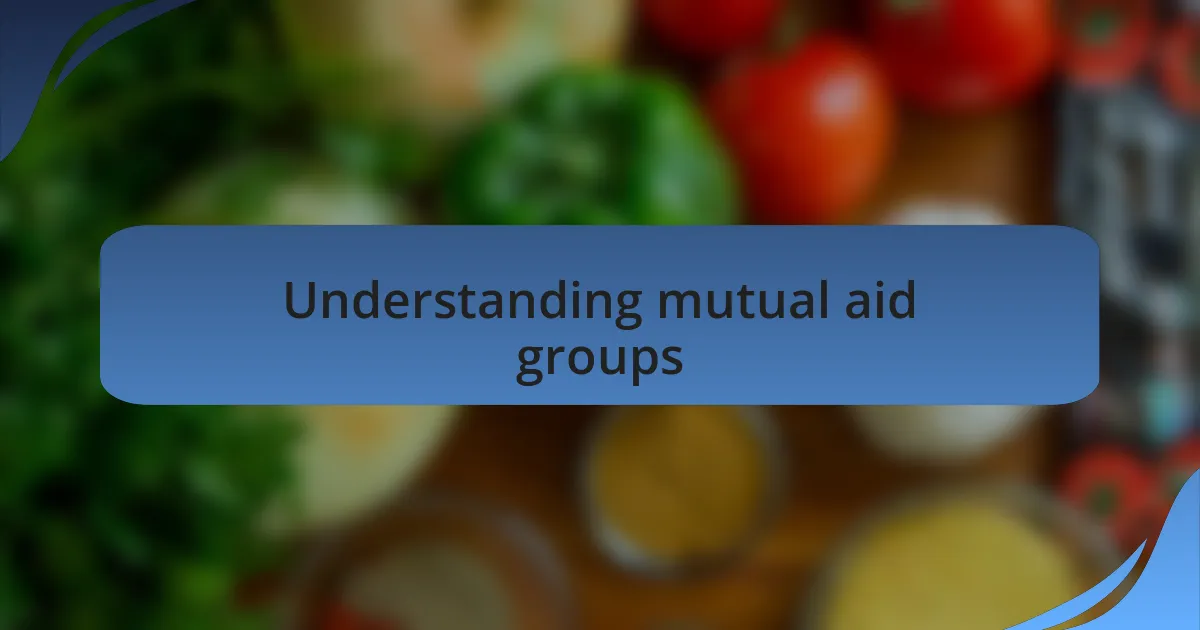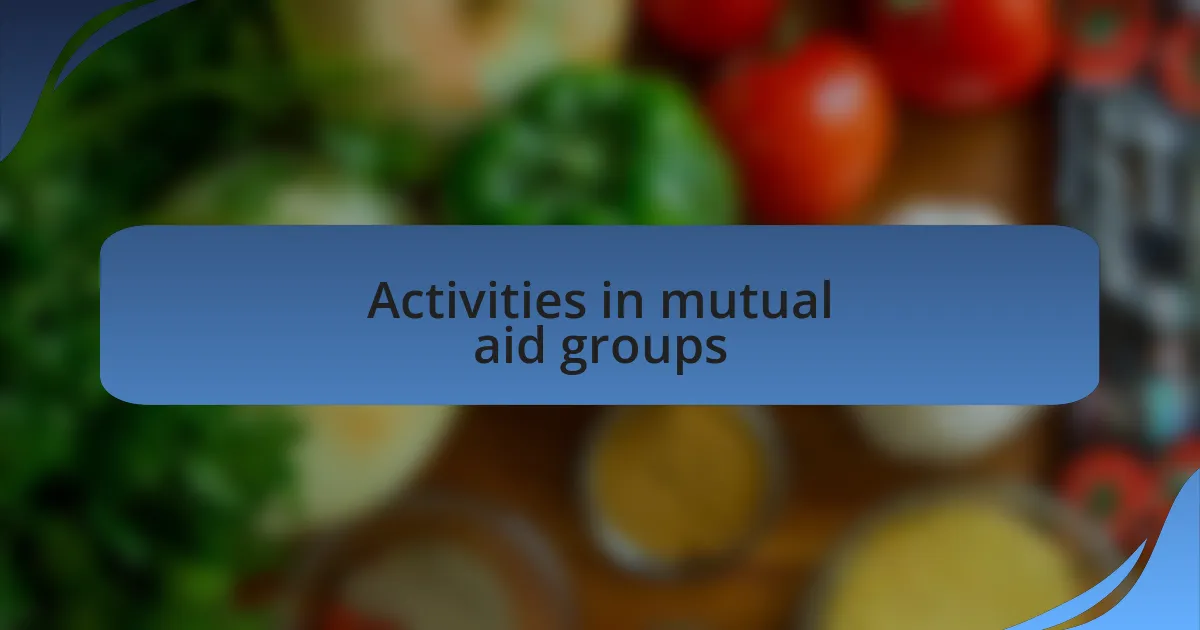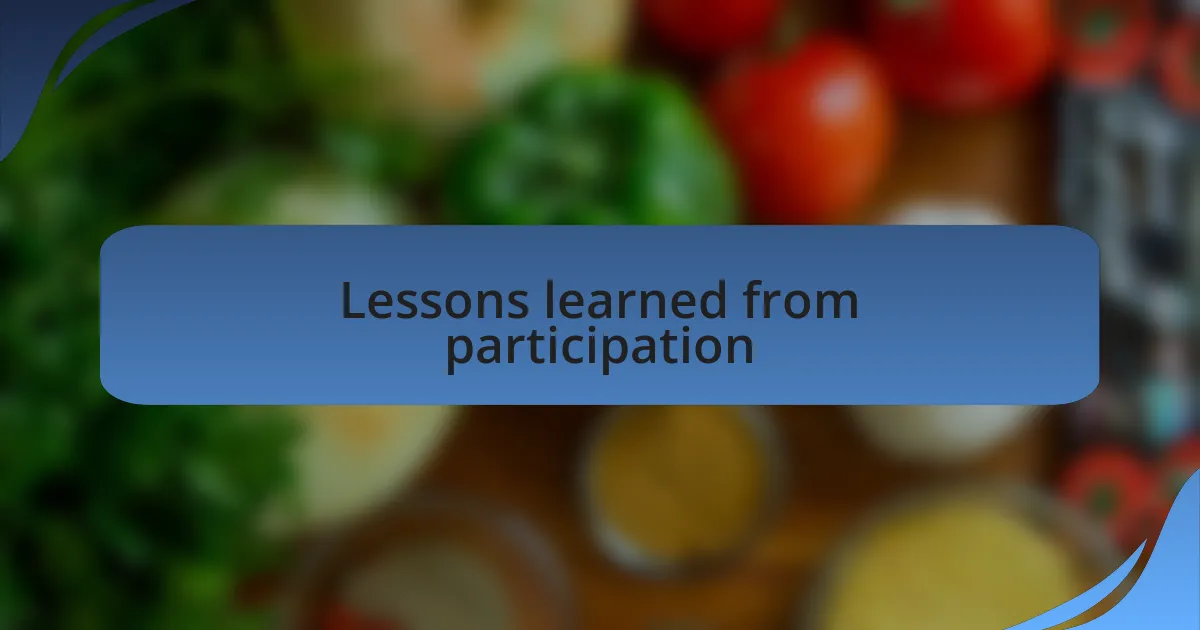Key takeaways:
- Mutual aid groups foster a strong sense of community and emotional well-being through reciprocity, support, and shared experiences.
- Coordinating activities such as food drives and skill-share workshops significantly enhances community connection and individual capabilities.
- Personal experiences in mutual aid highlight the profound impact of simple acts of kindness and the importance of connection during difficult times.
- Active listening, collaboration, and embracing diverse perspectives are vital lessons learned from participation in mutual aid groups.

Understanding mutual aid groups
Mutual aid groups are fascinating in their ability to harness community strength in times of crisis. I remember my first meeting, where strangers gathered with a shared goal—to support one another. It struck me how quickly we transformed from unknown individuals to a tight-knit community, bonded over our challenges and hopes.
These groups function on the principle of reciprocity, where everyone offers and receives support, creating a network of solidarity. Have you ever felt overwhelmed, seeking help from friends but unsure how to ask? In mutual aid, it’s understood that everyone contributes what they can, whether it’s food, resources, or simply a listening ear.
What I found especially touching was the emotional connection formed through shared experiences. For instance, witnessing someone’s relief after receiving assistance reminded me of the profound impact we can have on one another. It made me realize that mutual aid isn’t just about tangible help; it also nurtures our emotional well-being by fostering a sense of belonging and understanding.

Activities in mutual aid groups
One common activity in mutual aid groups that I found truly rewarding is coordinating food drives. I was involved in one where we collected surplus food from local businesses and distributed it to those in need. Watching families light up as they received groceries was a heartwarming reminder of the simple ways we can make a big difference in someone’s day.
In addition to food drives, many groups organize virtual meet-ups for sharing resources and providing emotional support. During one session, we created a “resource map,” listing local services available for everything from mental health support to childcare. I realized how empowering it is to have comprehensive access to community tools right at our fingertips—it’s like having a community directory that fosters connection and collaboration.
Another remarkable aspect I experienced was organizing skill-share workshops, where members taught each other various practical skills, from cooking to budgeting. I participated in a workshop on gardening, and it was incredible how learning something new brought us together. Have you ever felt that spark of connection while learning with others? It transformed our group dynamic, and I believe these kinds of activities not only enhance individual capabilities but also strengthen the ties that bind us as a community.

Personal experiences with mutual aid
One of my most memorable experiences with mutual aid was when a neighbor reached out for help during lockdown. She was struggling with depression and felt isolated. We organized small check-in visits where we would sit on her porch, chatting while maintaining distance. Those moments became a lifeline for both of us—reminding me of the power of connection even in times of uncertainty.
Another time, I joined a group that paired volunteers with families who needed assistance with errands. I vividly recall delivering groceries to a single mother who had recently lost her job. When I handed her the bags, her eyes filled with tears of relief. That moment pushed me to reflect on how much we often underestimate the impact of simple acts of kindness in our busy lives.
Additionally, I found immense comfort in the collective resilience of our group during a shared online discussion about navigating grief. Everyone shared stories of loss, and it felt incredibly validating to hear that I wasn’t alone in my feelings. Has there been a time when you found solace in the shared experiences of others? It reinforced my belief that mutual support can create a profound sense of belonging, making challenges feel less daunting.

Lessons learned from participation
Participating in mutual aid groups taught me the significance of active listening. In one instance, during a community meeting, a fellow volunteer shared her struggles with anxiety. By simply being there and acknowledging her feelings, I realized how crucial it is to create safe spaces for honest conversations. Have you ever felt the relief that comes from being truly heard? It’s transformative.
Another powerful lesson emerged when I witnessed the sheer strength of collaboration. In one project, we pooled resources to support local families facing food insecurity. The planning sessions were filled with laughter and camaraderie, reminding me how collaboration can inspire creativity. Isn’t it fascinating how working together can turn challenges into opportunities for innovation?
Lastly, I gained a deep appreciation for the diverse perspectives within our group. Each person brought unique insights and experiences to the table. I vividly remember a discussion that challenged my assumptions about community needs. When we share our stories, we enrich each other’s understanding. It makes me wonder: how often do we limit our perspectives by not engaging with those who live different realities?